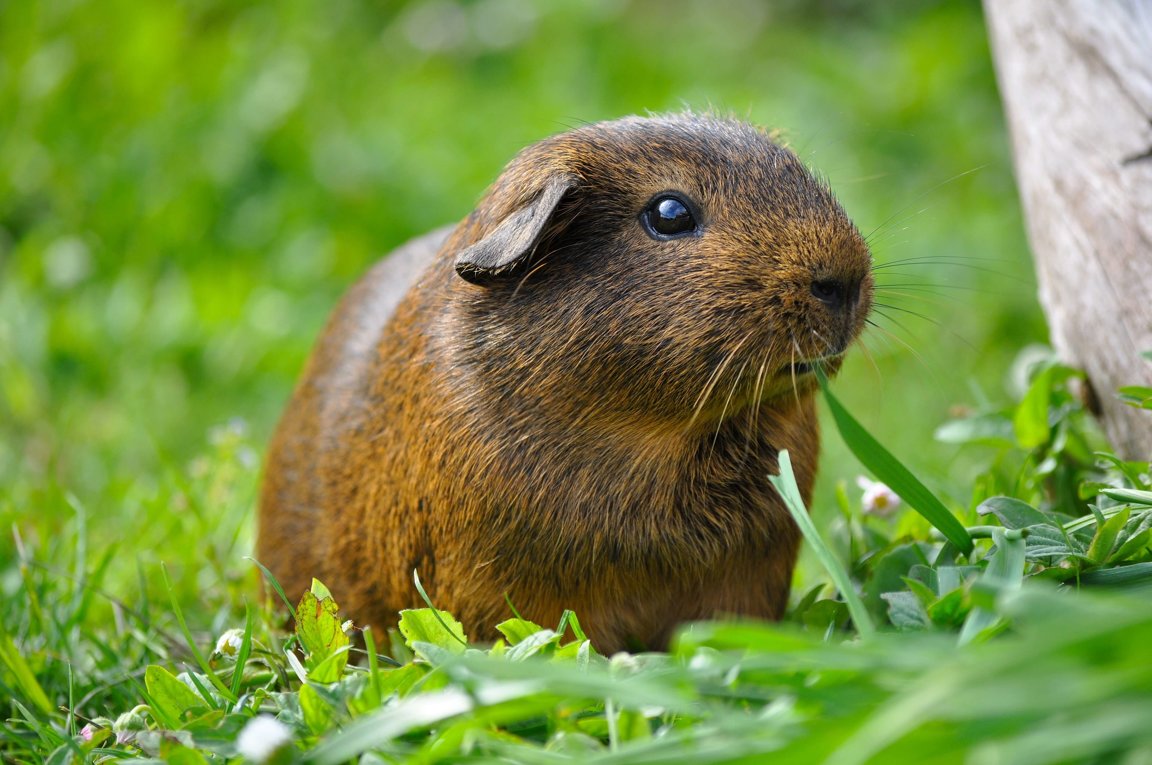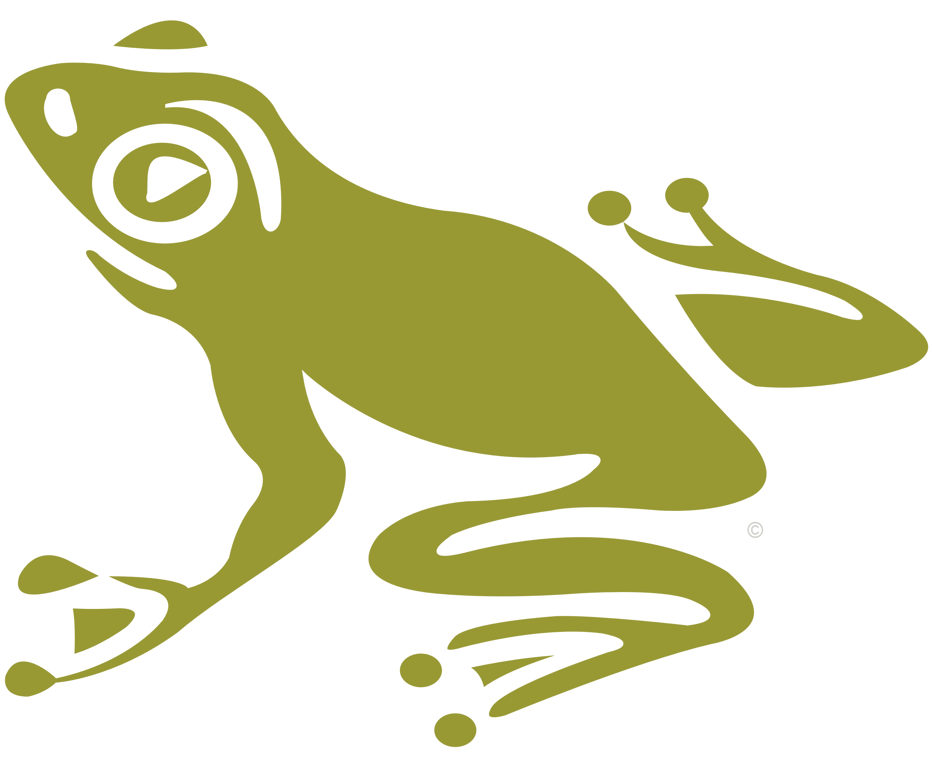
Guinea Pigs
Guinea pigs, or cavies, are found naturally in the Andes mountains in South America. They were domesticated in South America around 5,000 BC and used as a source of food. The domestic guinea pig is a subspecies of the Andes guinea pig and therefore cannot be found in the wild.
Guinea pigs are small, furry herbivores that can live 7 years or more. They communicate with high pitched squeals. Wild guinea pigs eat grass and small plant matter. They also supplement their diet by eating their feces, soft pellets that offer vital nutrients.
Guinea pigs are very social animals and prefer to be among other guinea pigs. They are also territorial and may not like having their cage cleaned. They often will urinate and drag themselves along the cage floor after cleaning to remark their territory.
Perhaps because of the perilous misconception that guinea pigs make great “starter pets” for children, these fragile animals have become popular “pocket pets.” Despite their popularity, guinea pigs aren’t worth as much as a bag of dog food to the stores that peddle them. Sick guinea pigs rarely receive treatment, many are shipped to pet stores too young to be weaned and many arrive with mites.
If you’re willing to open your home to one or, preferably, two guinea pigs, adopt from a shelter or rescue group. Before you do, be prepared to care for your guinea pig for as long as seven years or more and to spend at least $20 per week for supplies.
An exotic-animal veterinarian will need to see the guinea pig annually and can also help with regular nail trimming—a must.
If you are housing a male and female together, you must also first have them sterilized. However, spay/neuter surgeries are more dangerous to perform on small animals, so it is preferable to house females with other females and males with no more than one other male—three or more males together will fight.
Provide your guinea pig with the following:
- High-quality, soft timothy hay for nesting and snacking—for young, pregnant, or nursing guinea pigs, alfalfa hay is recommended
- Timothy hay-based guinea-pig food pellets (not rabbit pellets), in a heavy food bowl
- Small amounts of fruits and vegetables, such as carrots, apples, and alfalfa hay, and a small salt block (no sweets, meats, or dairy products)
- A source of vitamin C, which is available in various forms from pet supply stores—some commercial guinea pig food come stabilized with vitamin C, and kale, cabbage, melons, apples, or vitamin supplements are also safe sources of vitamin C
- A gnawing log, such as an untreated fruit-tree branch, to wear down incisors
- A cage that is at least 30 inches wide, 36 inches high, and 36 inches long for one guinea pig, but you should make it as large as you can, preferably with two levels for exploring, little ramps, and a “bedroom” made out of an upside-down box with a cut-out doorway
- Since guinea pigs do not climb or jump, they can also live in open enclosures, such as a plastic “kiddie” pool, as long as other animals, including small children, will not have access to the pool
- Daily cage or enclosure cleanings, removing all substrate and wiping the floor with an antiseptic cleaner and then drying with a paper towel
- A brick, rough stone, or cinder block for wearing down nails
- Daily exercise in a safe, securely enclosed room
- Fresh water in a bottle with a sipper tube—check the tube daily for clogs
- Weekly combing and brushing—essential for long-haired angoras
